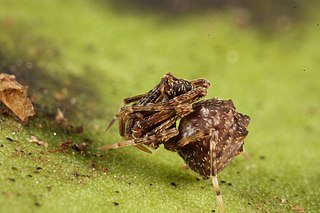
Archaeidae, also known as assassin spiders and pelican spiders, is a spider family with about ninety described species in five genera. It contains small spiders, ranging from 2 to 8 millimetres long, that prey exclusively on other spiders. They are unusual in that they have "necks", ranging from long and slender to short and thick. The name "pelican spider" refers to these elongated jaws and necks used to catch their prey. Living species of Archaeidae occur in South Africa, Madagascar and Australia, with the sister family Mecysmaucheniidae occurring in southern South America and New Zealand.
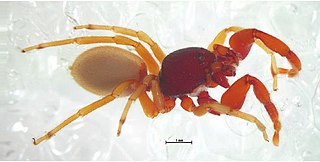
The Palpimanoidea or palpimanoids, also known as assassin spiders, are a group of araneomorph spiders, originally treated as a superfamily. As with many such groups, its circumscription has varied. As of September 2018, the following five families were included:

Zephyrarchaea is a genus of Australian assassin spiders first described by Michael Gordon Rix & Mark Harvey in 2012 for nine new species and two that were formerly placed in the genus Austrarchaea. The name is based on the Latin zephyrus, meaning "west wind", referring to the western distribution in Australia and a preference for windy, coastal habitats by some species. It has been encountered in Western Australia, Victoria and South Australia.
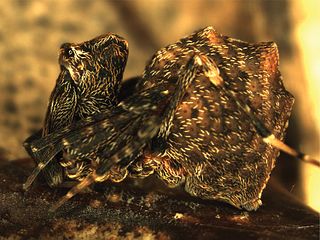
Zephyrarchaea janineae is a species of spider of the family Archaeidae. The Latin species name was chosen to honor Janine Wojcieszek who helped in discovering the first live specimens of the species in 2006. Zephyrarchaea janineae is endemic to the South West Region in Western Australia.
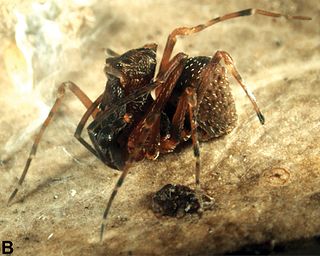
Zephyrarchaea barrettae is a species of spider of the family Archaeidae. The Latin species name was chosen to honor Sarah Barrett, who first discovered assassin spiders in the Stirling Range National Park.
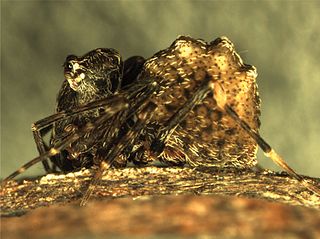
Zephyrarchaea mainae is a species of spider, informally known as Main's assassin spider, Albany assassin spider, and the Western archaeid spider. The first of the assassin spider family found in Western Australia, the species was unknown until its collection at Torndirrup National Park near Albany was published in 1987.
Eriauchenus andriamanelo is a species of spider in the family Archaeidae. It is endemic to Madagascar.
Eriauchenus harveyi is a species of spider in the family Archaeidae. It is endemic to Madagascar.
Austrarchaea alani is a species of spider in the family Archaeidae. It is endemic to south-east Queensland, Australia where it is found in the Kroombit Tops National Park.
Austrarchaea aleenae is a species of spider in the family Archaeidae. It is endemic to south-east Queensland, Australia where it may be found in the Bulburin National Park and Kalpowar State Forest.
Austrarchaea mcguiganae is a species of spider in the family Archaeidae. It is endemic to Monga National Park in New South Wales, Australia.
Austrarchaea smithae is a species of spider in the family Archaeidae. It is commonly known as the Blue Mountains Assassin Spider as the holotype male was found at Mount Wilson in the Blue Mountains National Park. It was named to honour Dr Helen Smith. It is endemic to Australia.
Austrarchaea raveni is a species of spider in the family Archaeidae. It is endemic to Australia.
Austrarchaea woodae is a species of spider in the family Archaeidae. It is commonly known as the Mount Bartle Frere Assassin Spider as the holotype male was found at Mount Bartle Frere in the Wooroonooran National Park. It was named to honour Hannah M. Wood and is endemic to Queensland, Australia.
Austrarchaea wallacei is a species of spider in the family Archaeidae. It is endemic to Australia.
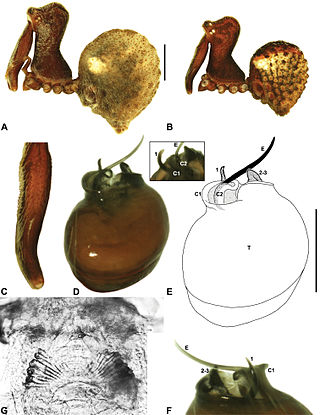
Zephyrarchaea marae, the West Gippsland assassin spider, is a spider in the family Archaeidae. The species was first described by Michael G. Rix and Mark Harvey in 2012. It is endemic to Victoria in Australia.
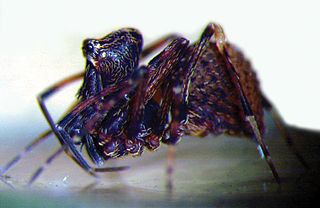
Zephyrarchaea marki, the Cape Le Grand assassin spider, is a spider in the family Archaeidae. The species was first described by Michael G. Rix and Mark Harvey in 2012. It is endemic to Cape Le Grand National Park in Australia.
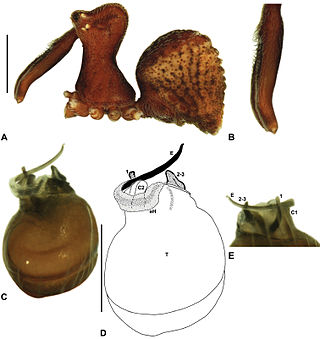
The Otway Range Assassin Spider(Zephyrarchaea porchi) is a species of spider in the family Archaeidae. It is endemic to Victoria, Australia.

Zephyrarchaea vichickmani, the Central Highlands assassin spider, is a spider in the family Archaeidae. The species was first described by Michael G. Rix and Mark Harvey in 2012. It is endemic to Victoria, Australia.

Zephyrarchaea austini or the Kangaroo Island assassin spider is a species of Australian assassin spiders that is endemic to the north west of Kangaroo Island, South Australia. It was discovered in 2010, and described 2012 by Michael G. Rix and Mark Harvey, and named for Andy Austin.











